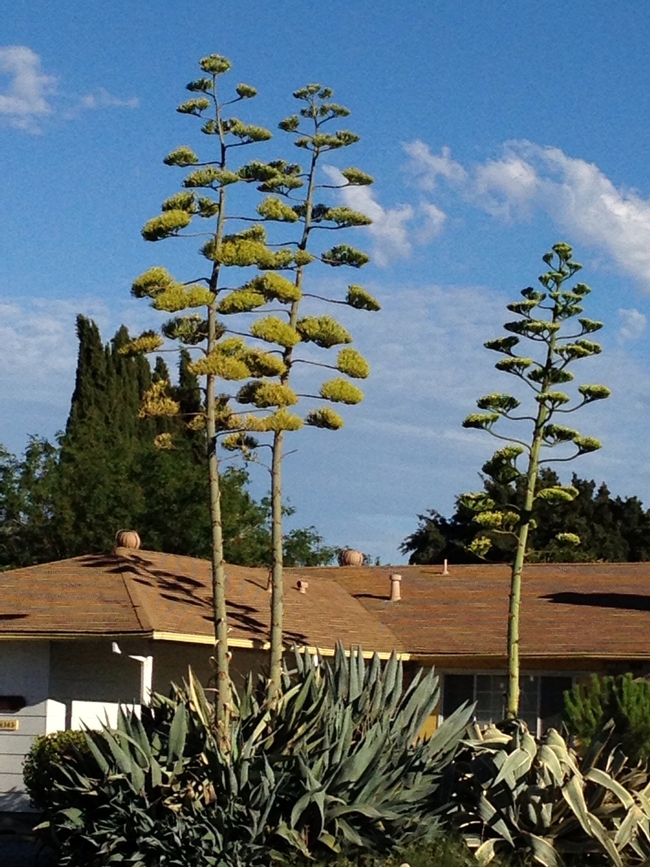Century Plant
Sometimes interesting plants are right under you nose. Being a horticulturalist, I always have my eyes scanning people's landscapes looking over plants in hopes of seeing something new and interesting. In my own neighborhood, I have spied a plant that is unfamiliar to me. I am waiting to see it bloom again this year. Maybe by then I will have the courage to stop and ask my neighbor what the plant is. I hope they don't think I am some psycho. Not the case-just a complete plant nerd!
About two streets to the East of where I live, at the corner of Pitt School Road and H Street, is there is this eclectically landscaped yard. There was this older woman who would be out in the yard tending to it. She would water, weed or prune this or that. It has been a while since I have seen her out there. I assume she is either ill or passed away. I figured that whoever was living there now might change the landscape, but fortunately, they haven't and they have kept up on its maintenance!
The plants in the yard are a crazy mix from the regular geranium, to the exotic, succulent fig to the two fabulously gigantic agaves which are the specimens of this yard. I am sure anyone from Dixon knows the location of these two plant wonders. Many might think of the yard as a jumble, but to a plant lover like me, it is indeed interesting.
The agaves (Agave americana) always catch my eye. They are especially stunning when they put off a flower. Unfortunately, they are semelparious in nature, which means they flower once and then die. The plant can put off seed, and endeavors to live on by putting off suckers or adventitious shoots.
The reason the agave is so interesting to me is the massive amount of plant there is. It takes a lot of energy to produce such a behemoth. Maybe that is why by the time it flowers, it just doesn't have enough steam to carry on. This also disproves the misnomer of Century Plant, as this agave lives only about 10-30 years versus 100.
If you ever get a gander of these agave, check out their leaves. They are about 6 feet in length tipped with a dagger of a point at the end, which can cut to the bone if you had the misfortune to encounter it. One variety of the agave is a grey-green and the other is the variegated yellow (Agave americana 'Marginata') and grey. Both have the towering flower spike and are putting on their show now.

The Century Plant sends up the flower spikes. (photos by Jennifer Baumbach)

Head-turning flowers are beginning to unfurl.

Interesting, yellow flowers adorn the large spikes.

A shot of the entire landscape. Note they are taller than the street light.


Posted by Marian Chmieleski on July 20, 2013 at 7:02 PM